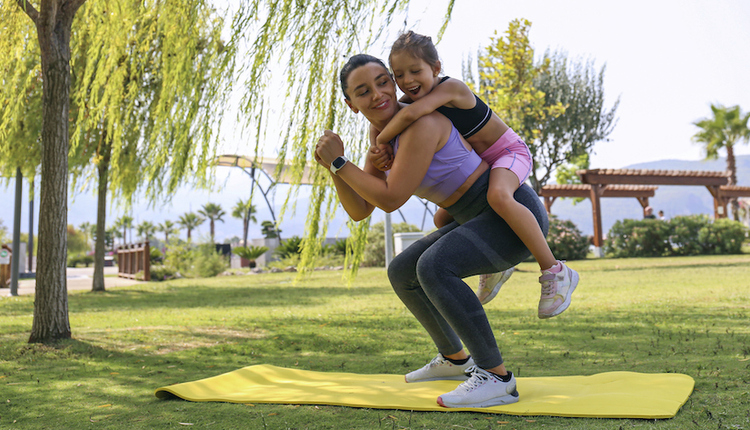This article outlines a strength and conditioning program that produces significant, measurable improvements in strength, power, and muscle endurance. Because the program is so practical to everyday and crisis situations, it is called "Strength for the Streets."
What separates "Strength for the Streets" from other programs is that we focus on the most difficult 15 seconds to 15 minutes of your life. We're not worried about making you pretty or slim, or helping you to lose weight. This is not a program to look like a body builder. We are going to build your strength so you can move something heavy. We're going to build your power to give you that explosive speed, and muscle endurance as well. The program also focuses on flexibility and balance.
"Strength for the Streets" builds the kind of strength that can help you survive in a crisis or attack, and function more effectively in everyday life. It is effective for everything from carrying groceries and babies, performing better in martial arts or boxing, lifting heavy objects at work, and preparing to rescue victims or apprehend criminals (e.g., firefighters, paramedics, and law enforcement). The program can help prevent injuries in sports with twisting, turning, jumping and that place high demands on the body and joints. It also can be a wonderful cross-training program for all sorts of athletes. The end goal of the program is not elite athleticism, but it can help elite athletes enhance their capabilities.
If you want to improve your clients' retention by giving them the results they came for instead of "pretend fitness," this program can really work for you. I find my clients to be extremely interested and compelled by this kind of workout, and very loyal to it. People love this kind of innovative, fun, varied workout - and they get results that keep them coming back and raving to others.
Clients who rave about this program come from an incredible range of backgrounds: recent rehabilitation patients, people bored with the usual fitness facility routines, new mothers who want to improve their strength and have only a short amount of time to workout, high school and college athletes who are cross-training, professional ball players in just about every sport, and martial artists. Most recently, I've been working with a gentleman preparing to enter the Army Rangers, and he tells me that this program is the most effective he has ever experienced.
Here are some quick definitions that are important for this program:
Strength. If you are going to move a heavy object regardless of the time frame involved, that is strength.
Power. If you are going to move that same object quickly, that's power. Power is strength plus speed. It is the ability to apply force quickly.
Endurance. Muscle endurance is your ability to do repetitive motions for a long time, without depletion. How many punches can you throw in a minute? How many times can you lift a heavy object in 30 seconds? For how long can you hold somebody in a bear hug? That is all endurance.
In the Strength for the Streets workout, most of your clients will be tapped out in 30 minutes or less and yet still get the benefits they need. In my experience, real-world crisis situations require fast-moving, hard-hitting, explosiveness - and traditional workouts on the treadmill or with a circuit of machine weights don't prepare you. In a real world confrontation, when the adrenaline begins flowing (an "adrenaline dump"), you begin to shake, your heart beats quickly, your fine motor skills deteriorate to almost nothing and your gross motor skills are all that are left. That's where you survive. It doesn't matter how many triceps extensions you can do in a crisis, or what you can push on a bench press. Those exercises have their place, but not in this program.
This program emerged through my decades of experience in the military and then in a variety of martial arts. It brings together the work of experts in kettlebells, Soviet Special Forces training, weight lifting,
Working together with these experts, I have created an alternative to the standard, boring gym and weight machine workout. I've refined them so that they provide regular people - of all fitness levels - with the most energizing and unique workout of their lives.
We start with some innovative body weight exercises - solo and with partners - that are challenging, fun and very different from the usual workout.
Then we move to the kettlebell. The kettlebell (typically a circular weight with an offset handle) is an effective and increasingly popular device that changes the inertial forces while you work out and moves in non-linear patterns, just as we do in crisis situations, in a fight, in a rescue situation, and on the street. In a crisis situation, whether trying to rescue a drowning person, get out of a burning building, pull someone out of a car wreck, fight off a terrorist, or resist a kidnapper or rapist, it won't happen in a linear, structured, straightforward movement. It will usually happen in an awkward, non-linear, unbalanced position without equal force on both sides of the body.
We also work out with rockballs and sandbags. Rockballs can be 90 to 120 pounds, and sandbags can be 40 to 60 pounds. Both are easy to make with simple supplies found at any hardware store (e.g., a contractor's trash bag, river gravel, and duct tape). In addition to working out with these objects alone, you can also fill a duffle bag with sandbags and keep bumping it up to heavier and heavier weights. All of these unconventional objects are great training tools, because they are not equally balanced or linear the way that machine weights are. They prepare you for carrying or resisting heavy objects in a crisis situation when weights are not evenly distributed and when movement is not symmetrical.
I also use a heavy punching bag as a tool for clients to carry. Many gyms have heavy bags for punching and kicking, and this item can also be an excellent workout tool for strength training.
In addition, the program includes exercises with weight sleds. You can make a weight sled yourself or buy them. You can load them with a variety of weights (e.g. weight plates or sand bags) and move them with a rope or belt. Weight sleds prepare people for dragging people in a rescue situation, and also are fun and innovative ways to build general strength, endurance, and power.
We also use dumbbells and barbell plates, both on weight sleds and as occasional substitutes for some kettlebell exercises, in case people haven't yet invested in kettlebells. However, we use this equipment in unconventional ways, with different grips that build tremendous hand, wrist, and forearm strength.
There is nothing like Strength for the Streets on the market today. For fitness professionals tired of offering "pretend fitness" and "beach muscles" to clients, this program can be a welcome addition to one's training tool kit. It can also set you apart as a unique, innovative fitness professional who focuses on significant, measurable improvements in strength, power, and endurance.
Frank DiMeo is the author of Strength for the Streets. For more information, visit http://www.americanstrengthtraining.com.









